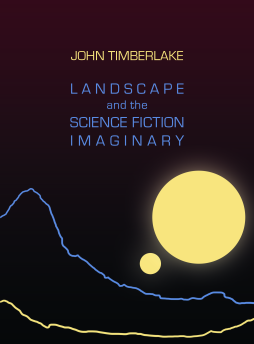
Additional Information
Book Details
Abstract
Landscape and the Science Fiction Imaginary is an original and ambitious exploration of science fiction as a visual cultural discourse. This book argues that a serious account has yet to be given of the key role of the visual in a wider science fiction culture, both in its effects and its potentials. Taking influential historical works of visual art as starting points, along with illustration, movie matte painting, documentary, ‘artist’s impressions’ and digital environments, John Timberlake focuses on the notion of science fiction as an ‘imaginary topos’, which draws principally on the intersection between landscape and historical/prehistorical time. As a genre science fiction has a peculiar ocularity and envisioning that places it at odds with realist fiction, and this book posits the genre as a form of ‘alternate seeing’, a deeply visual and evocative method for understanding the connections between science, history, the pre-human and the non-anthropocentric. Indeed, as the author argues, to begin to account for the excess of science fiction landscape is to examine how we as humans might look afresh, without the comforts of familiarity or complacency. Richly illustrated, this book will appeal to scholars, students and fans of science fiction and the visual culture that surrounds it.
‘From the suppositional realism of Chesley Bonestell and Pavel Klushantsev to the neurotic brutalism and accelerationist jouissance of Chris Foss, from Yōsuke Yamahata’s images of atom-bombed Nagasaki to Frederick Sommer’s revisualization of Arizona’s deserts, John Timberlake shows us how science-fictional landscapes renegotiate the relationships between figure and ground, between species and environment, and between past, present and future. Science fiction’s ocularity exposes the critical dialectical potential of the present moment before inertia and reaction lock it down. Essential reading.’
Mark Bould, University of the West of England
John Timberlake is a senior lecturer of fine art at Middlesex University.
Table of Contents
| Section Title | Page | Action | Price |
|---|---|---|---|
| Cover | Cover | ||
| Half Title | i | ||
| Title | iii | ||
| Copyright | iv | ||
| Contents | vii | ||
| Acknowledgements | ix | ||
| Introduction | 1 | ||
| Chapter 1: Land of the Giants: Size and Scale, Macroscopy and Microscopy in the Landscapes of Science Fiction | 23 | ||
| Chapter 2: A Game in the Ruins: Landscape and Virtual Realities | 49 | ||
| Chapter 3: Blasted Heaths and Turbulent Energies: Chris Foss’s Accelerated Dream of Wessex | 75 | ||
| Chapter 4: An Unforgiveable Composure: The Apocalyptic Imaginary Since Yosuke Yamahata’s Nagasaki | 93 | ||
| Chapter 5: ‘Suppositional Realism’ and the Fictions of Science: The Astronomical Landscapes of Pavel Klushantsev and Chesley Bonestell | 119 | ||
| Chapter 6: Beyond the Periphery: Desert and Darkness | 147 | ||
| Conclusion: Where Otherwise Nothing Has Changed | 169 | ||
| References | 177 | ||
| Illustration Copyright Acknowledgements | 183 | ||
| Index | 185 | ||
| Back Cover | Back Cover |
